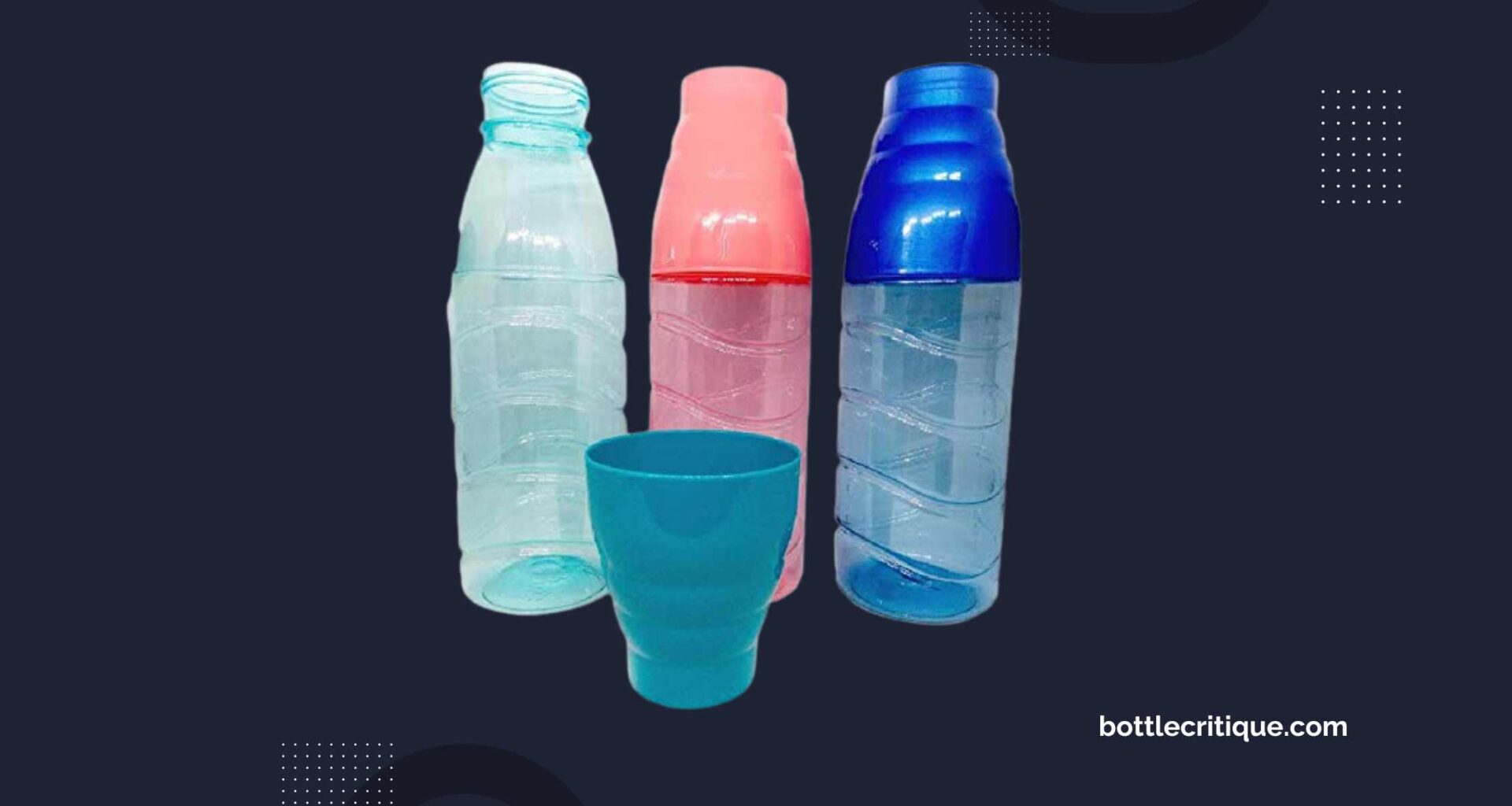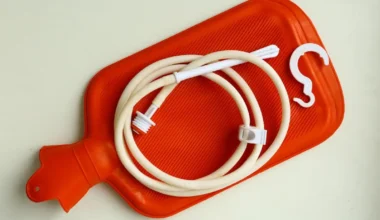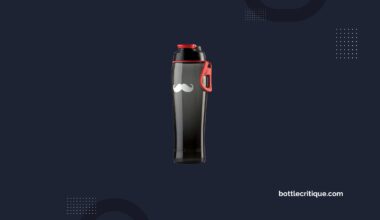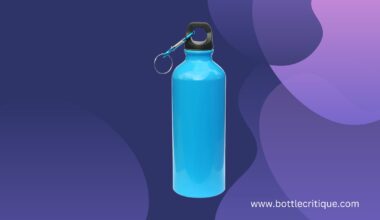Every wondered how wide is a typical water bottle? Water bottles come in a variety of shapes, sizes, and designs, making it difficult to provide a standard answer. However, let’s dive in and explore the average width of some common water bottles on the market.
Understanding the width of a water bottle can help you decide which one might fit best in your bag, cup holder, or hand. It also allows you to plan your hydration needs effectively.
Are you ready to explore the world of water bottle dimensions?
What Determines the Width of a Water Bottle?
Ever wondered what determines the width of your water bottle? It might seem like a simple question, but a number of factors come into play. Understanding these factors can help you make an informed choice when purchasing a water bottle.
Material
First off, the material of the bottle plays a significant role. Plastic bottles tend to be wider than those made from metal or glass. This is because plastic is lightweight and can accommodate a larger volume without adding much weight. On the other hand, metal or glass bottles are often narrower to maintain a manageable weight and balance.
Design and Functionality
Another key determinant is the design and functionality of the water bottle. For example, water bottles designed for outdoor activities like hiking or biking are often wider. Why? A wider base provides stability, preventing the bottle from tipping over easily. In contrast, water bottles meant for use in office environments or for everyday carry are generally slimmer to fit conveniently into bag pockets or car cup holders.
Capacity
Lastly, the capacity of the water bottle influences its width. A larger capacity requires more space, thus leading to a wider bottle. This is why you’ll find that a 1-liter bottle is wider than a 500ml one.
So, the next time you’re picking a water bottle, remember to consider these factors. It’s not just about quenching your thirst, it’s about selecting a bottle that suits your lifestyle!
Common Widths of Water Bottles and Their Uses
Did you ever wonder, “how wide is a water bottle?” If so, you’re in the right place! Water bottles come in different widths, and each size serves a unique purpose. Let’s delve into the common widths of water bottles and their uses.
The Standard Water Bottle
The standard water bottle, often used for hiking, gym, and everyday use, typically measures around 2.75 to 3.25 inches in width. That’s small enough to fit comfortably in most car cup holders and backpack pockets, yet large enough to quench your thirst.
The Slim Water Bottle
For those who prefer a slimmer design, water bottles as narrow as 2.5 inches are available. These thinner models are easy to hold and ideal for travel, fitting snugly into the side pockets of backpacks and small bags.
The Wide-Mouth Water Bottle
On the other end of the spectrum, you have wide-mouth water bottles that can be up to 3.5 inches wide. These are perfect for outdoor adventures as they can hold ice cubes, making them the go-to option for keeping drinks cold on hot days.
| Type of Water Bottle | Typical Width | Best Use |
|---|---|---|
| Standard Water Bottle | 2.75 to 3.25 inches | Gym, Hiking, Everyday Use |
| Slim Water Bottle | 2.5 inches | Travel, Easy to Hold |
| Wide-Mouth Water Bottle | 3.5 inches | Outdoor Adventures, Cold Drinks |
In conclusion, the width of a water bottle can vary considerably, depending on its design and intended use. So, the next time you’re in the market for a new water bottle, consider your needs and pick the width that’s right for you!
How to Measure the Width of Your Water Bottle
Have you ever tried to figure out how wide your water bottle is? Maybe you’re trying to see if it fits in your bike’s bottle holder or perhaps in your bag’s side pocket. Whatever the reason, accurately measuring the width of your water bottle is simpler than you might think.
Materials You’ll Need
- Tape Measure: A flexible tape measure is ideal as it can easily wrap around the circumference of the bottle.
- Your Water Bottle: The star of this show! This is what you’ll be measuring.
Steps to Measure Your Water Bottle
- Wrap the Tape Measure Around Your Bottle: Start by wrapping your tape measure around the widest part of your water bottle. Make sure the tape is level and not at an angle.
- Read the Measurement: Once the tape measure is wrapped around your bottle, read off the measurement where the tape measure meets itself. This is your bottle’s circumference.
- Calculate the Diameter: To find the diameter (which is the actual width), divide the circumference measurement by 3.14 (pi).
Remember, the width of a water bottle is the same as its diameter. So, when you calculate the diameter, you have your width!
Tips for Accurate Measurement
- Measure the Widest Part: Always measure the widest part of the bottle to ensure you’re getting the correct width.
- Keep the Tape Level: Make sure the tape measure is level around the bottle to get an accurate circumference measurement.
So there you have it! Now you know how to measure the width of your water bottle accurately. No more guessing, no more surprises – just precise measurements every time. Happy measuring!
Narrow vs. Wide Mouth Water Bottles: Pros and Cons
When it comes to choosing a water bottle, one of the key considerations is the width of the mouth. But what exactly is the difference between a narrow and a wide mouth water bottle? And what are the pros and cons of each? Let’s delve into this.
Narrow Mouth Water Bottles
Narrow mouth water bottles, as the name suggests, have a smaller opening. They are typically easier to drink from without spilling, especially while on the move.
- Pros:
- Easier to drink from without spilling
- Less likely to spill if tipped over
- Ideal for drinking while in motion
- Cons:
- Difficult to fill with ice or to clean
- Not ideal for pouring in beverages or mixtures
Wide Mouth Water Bottles
On the other hand, wide mouth water bottles have a larger opening. This makes them ideal for adding ice, mixing drinks, or cleaning.
- Pros:
- Easy to fill with ice or mix drinks
- Easy to clean
- Allows for faster hydration
- Cons:
- More likely to spill when drinking, especially while moving
- May spill if tipped over
So, narrow or wide mouth? The choice ultimately depends on your personal needs and preferences. Consider the pros and cons of each before making your decision.
Choosing the Right Width for Your Water Bottle: Factors to Consider
Choosing the right width for your water bottle isn’t as simple as it might seem. It’s not just about what fits your hand or your cup holder. There are several factors to consider, let’s dive into them.
1. Purpose
Are you planning on taking your water bottle to the gym, or will it mostly sit on your office desk? For active people, a narrower bottle might be easier to carry around and use while working out. On the other hand, if it’s mainly for stationary use, a wider bottle can hold more water and will require fewer refills.
2. Portability
Consider where you’ll be taking your water bottle. Will it need to fit into a backpack, a bike bottle holder, or the cup holder in your car? The dimensions of these spaces can dictate the width of your bottle.
3. Materials
The material of your water bottle can also impact the width. Stainless steel bottles tend to be wider than plastic or glass ones. So think about what material you prefer before deciding on a width.
4. Volume
How much water do you want your bottle to hold? A wider bottle generally holds more water. So if you’re aiming to drink a lot of water throughout the day, a wider bottle might be a good choice. But remember, a bigger bottle also means more weight to carry around.
Note: There is no universally correct width for a water bottle. It depends on your personal needs and preferences.
In conclusion, choosing the right width for your water bottle involves considering your lifestyle, the spaces where the bottle will be stored or carried, and your hydration goals. Keep these factors in mind, and you’ll find the perfect bottle for your needs.
Best Brands of Wide Water Bottles for Active Lifestyles
Choosing the right water bottle for an active lifestyle can be a little tricky. It’s not just about getting a bottle that’s wide enough to fulfill your hydration needs, but also one that’s durable, easy to carry, and fits snugly in your bag or bike bottle holder. The best brands of wide water bottles offer just that and more.
Hydro Flask
Known for their innovative TempShield insulation that keeps your drink cold for up to 24 hours, Hydro Flask water bottles also come with a wide mouth. The stainless steel construction makes them incredibly durable, while the sleek design is easy on the eyes.
Nalgene
Nalgene has been a trusted brand in the outdoor industry for over six decades. Their wide-mouth water bottles are leakproof, durable, and come in a variety of colors. Plus, they’re dishwasher safe for easy cleaning!
Klean Kanteen
Klean Kanteen bottles come in various sizes, including a wide-mouth option. The electropolished interior doesn’t retain or impart flavors, ensuring your water always tastes fresh. And its rounded corners make it easier to clean.
CamelBak
With a mission to continuously reinvent and forever change the way people hydrate and perform, CamelBak offers water bottles with a wide mouth and easy-to-carry design. Their bottles are also dishwasher safe and come with a lifetime guarantee.
Remember, the best water bottle for you depends on your specific needs and lifestyle. Whether you’re hiking, biking, or just going about your day, make sure to choose a bottle that’s durable, easy to use, and keeps your drinks at the perfect temperature.
How Wide is Too Wide? The Debate Over Extra Wide Water Bottles
Ever wondered about the perfect size for a water bottle? You’re not alone. The debate over extra wide water bottles has been a topic of discussion among hydration enthusiasts for some time now. After all, the width of your water bottle can impact not just how much water you can carry, but also how easy it is to handle and transport.
In the conversation about water bottle widths, there’s one question that often comes up:
How wide is too wide?
Well, the answer isn’t as straightforward as you might think. It largely depends on your personal needs and preferences. Let’s break it down:
The Case for Extra Wide Water Bottles
- More water: The wider the bottle, the more water it can hold. This can be beneficial for those long hikes or workout sessions when you need to stay hydrated for extended periods.
- Easier to clean: A wider opening makes it easier to get inside the bottle for a thorough clean, which is great for maintaining hygiene and longevity of the bottle.
The Case Against Extra Wide Water Bottles
- Harder to handle: Extra wide water bottles can be harder to grip, especially for people with smaller hands. This can make them feel insecure or unstable when you’re on the move.
- Bulky: Wider bottles take up more space. They might not fit in your car’s cup holder, or your backpack’s side pocket, which can be inconvenient at times.
In conclusion, the width of a water bottle should be chosen based on your specific needs and preferences. If you need to carry more water and don’t mind the additional bulk, an extra wide bottle could be a good choice. On the other hand, if you prefer something easier to handle and more compact, a narrower bottle might be more up your alley.
So, how wide is too wide? The debate continues, but now you’re equipped with the knowledge to make an informed decision for yourself.
The Evolution of Water Bottle Widths: A Brief History
Ever wondered how the width of your water bottle came to be? The evolution of water bottle widths is an interesting journey that reflects both practical needs and lifestyle shifts. Let’s take a look.
The Early Years
In the early stages of water bottle design, utility was the main focus, leading to wider bottles. These were intended for stationary use, like on a worker’s desk or a hiker’s campsite. Their width varied, but generally, they were about 3.5 to 4 inches wide.
The Era of Portability
As lifestyles became more on-the-go, the need for portable water bottles increased. Thus, narrower designs were introduced to fit into car cup holders and backpack pockets. The standard width for portable water bottles during this time was around 2.75 to 3 inches.
The Modern Age
Today’s water bottles strike a balance between the old and the new. They’re designed to be portable, yet hold enough water for adequate hydration. The most common width of modern water bottles is approximately 2.5 to 3 inches, perfect for most cup holders and backpack pockets.
Note: While these measurements are common, there is no standardized width for water bottles. It largely depends on the brand and model.
Notable Mentions
- Nalgene’s Wide Mouth: With a width of 3.5 inches, this bottle pays homage to the early designs.
- Hydro Flask’s Standard Mouth: This model has a width of 2.91 inches, reflecting the modern need for portability.
- S’well’s Original Bottle: This sleek bottle has a width of 2.8 inches, emphasizing style and portability.
So, there you have it – a brief history of water bottle widths. Remember, the ideal width for your water bottle depends on your needs and lifestyle. Choose wisely!
The Future of Water Bottle Widths: Trends to Watch
Have you ever wondered about the future of water bottle widths? With the ever-changing trends in design and manufacturing, it’s only natural to be curious. But don’t worry, we’ve got you covered. Here are some key trends to keep an eye on:
Customizable Sizes
One trend gaining traction is the shift towards customizable water bottle sizes. Manufacturers are beginning to realize that one size does not fit all, and are offering bottles with adjustable widths to suit different needs. Whether you need a slim bottle for your bike’s bottle holder, or a wider one for your hiking backpack, you’ll have options.
Compact and Portable
As more and more people prioritize portability, the demand for compact and narrow water bottles is on the rise. This doesn’t mean sacrificing volume though – innovative designs are ensuring you can still carry the amount of water you need, but in a slimmer profile.
Eco-Friendly Materials
While not directly linked to width, the move towards eco-friendly materials is reshaping the water bottle industry. Bottles made from recycled materials may come in different widths and shapes than their non-recycled counterparts, adding another variable to consider when choosing the right water bottle for you.
Remember, finding the perfect water bottle is not just about width—it’s about finding a bottle that fits your lifestyle and needs. Do you need something portable or large? Eco-friendly or durable? The answer will guide your choice.
Keep an eye on these trends, and you’ll be well-equipped to navigate the future of water bottle widths. Happy hydrating!






